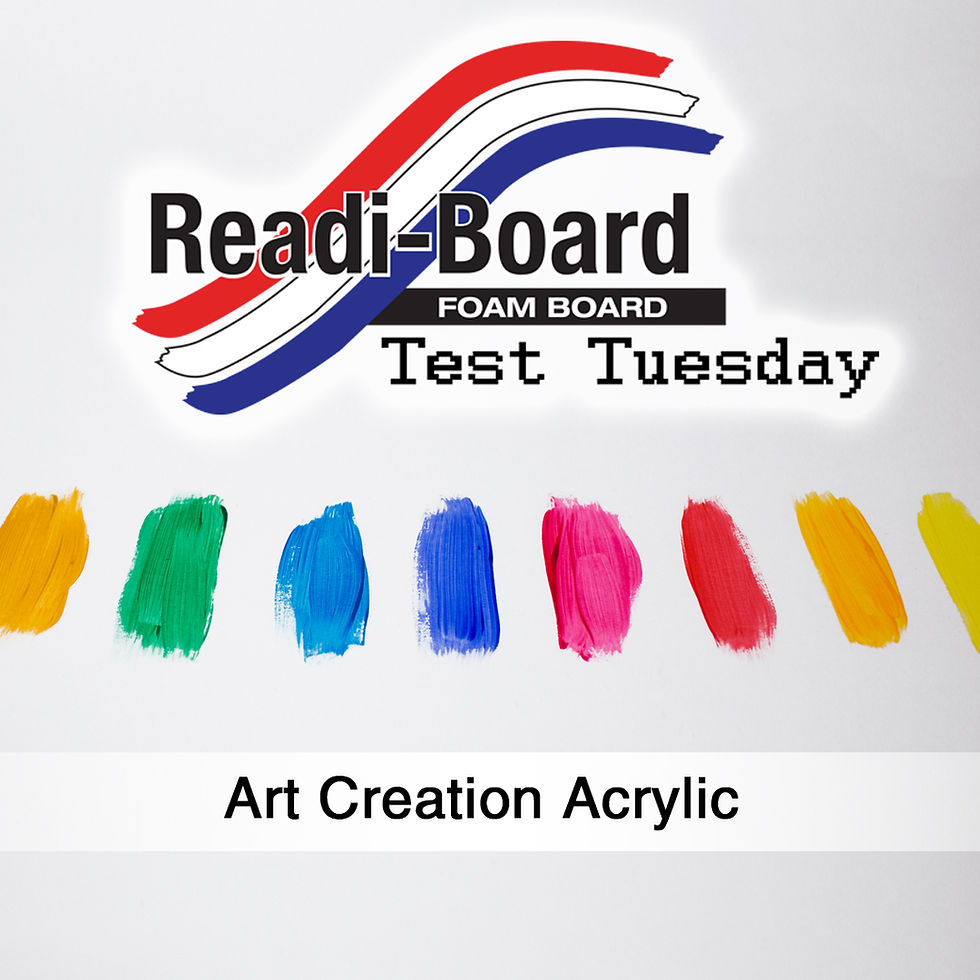Test Tuesday: Hot Glue
- sjulien0
- Dec 1, 2020
- 2 min read

In this Test Tuesday, we are working with hot glue. I am using a Surebonder Essentials (LT-160) low temperature glue gun. It is a 10W glue gun that reaches 250°F.
I cut my 4” by 4” samples in half. After pressing the two halves of the samples together I added a circle of glue to the outside. This will allow me to peel back the paper face after the glue has dried, and see if the foam beneath was damaged due to the heat.

All of the standard Readi-Board samples did well. It took quite a bit of effort to pry the sample pieces apart. Peeling back the paper facers revealed very minimal damage to the foam. Some areas of the foam became slightly raised. If I hadn’t been actively looking for something on the surface of the foam, I would not have noticed these marks.

The Adams Premium samples were difficult to pull apart. While the white Adams Premium sample broke in a way similar to the standard Readi-Board, the rest appeared divided by separating the paper facer. Peeling back the paper beneath the hot glue circle didn’t show any damage to the foam beneath it.

The No Paper sample did create a strong bond, however the foam surrounding it broke rather easily. You can see the damage caused by the heat of the glue easily on this sample. Hot glue held the Readi-Erase samples together as well. The board began to bend before finally allowing the back paper facer to break away. There was no damage to the foam beneath our test circle on the Readi-Erase sample. The Readi-Grid sample behaved like the Adams Premium samples. On the Readi Water Resistant sample the paper facer is what tore away. The foam beneath the paper did show some damage, but it is very slight.

Close up of the damage from hot glue on No Paper sample.
Hot glue is a very useful adhesive to utilize with foam board. When working with a hot glue gun I make an effort to keep the metal tip of the gun off of my foam board to avoid unnecessary heat damage. I recommend testing your own glue gun on a scrap or sample piece, as temperatures can vary between glue guns.





Commentaires